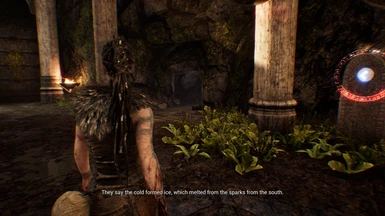

- #Oblivion graphics overhaul motion blur mod#
- #Oblivion graphics overhaul motion blur upgrade#
- #Oblivion graphics overhaul motion blur full#
S.T.A.L.K.E.R.'s NPCs plan ahead by "Goal-Oriented Action Planning" in order to achieve this. Numerous tactics can be employed to complete the game, such as rushing or using stealth and sniping NPCs will react in different ways to each of them. The AI characters travel around the entire zone as they see fit.

The non-scripted nature of the characters means that there are an unlimited number of random quests, such as rescuing Stalkers from danger, destroying Stalker renegades, protecting or attacking Stalker camps, and searching for treasure. These monsters will migrate in large groups.
#Oblivion graphics overhaul motion blur full#
NPCs have a full life cycle (task accomplishment, combat, rest, feeding and sleep) and the same applies to the many monsters living in the Zone (hunting, attacking Stalkers and other monsters, resting, eating, sleeping). These characters are non-scripted, meaning that AI life can be developed even when not in contact with the player. ALife supports more than one thousand characters inhabiting the "Zone" (the in-game term for the 30 km wide area of exclusion surrounding the Chernobyl Nuclear Power Plant). The X-Ray Engine uses the proprietary ALife artificial intelligence engine developed by GSC Gameworld.
#Oblivion graphics overhaul motion blur upgrade#
Unfortunately, it lacks the Inverse Kinematics, DX11 support (tesselation and contact hardening shadows included) and smart cover support to be called a complete upgrade over 1.5 and 1.6. Some of its advancements include improved multi-core support (best out of all versions), grass shadows, improved DX10.1 renderer, better foliage and rain effects. It was originaly based on the 1.0 version used in Shadow of Chernobyl.
#Oblivion graphics overhaul motion blur mod#
The new and improved 1.6 is also one of the very first engines to support DirectX 11(mostly in charcter model tesselation and even better shadow quality) and marks a new era in visual aspects of gaming history.Ī popular standalone mod called Lost Alpha uses a new, unique version of the X-Ray engine. NPCs can also use smart covers now, often blindfiring and supporting eachother in spectacular ways. The animation engine also recieved an overhaul, with many reworks in animation quality and Inverse Kinematics included into the game. One of the very noticeable visual effects that the X-Ray engine provided for Clear Sky is the sunbeam effect. New visual effects like volumetric light, dynamic volumetric smoke, full volumetric fire, soft water, dynamic wet surfaces' (with water streaming down the side of surfaces), depth of field blur, SSAO and DirectX 10/10.1 support. The improvements made to 1.5 compared to the original 1.0 were significant. It is a technique that blurs out the image to give a false impression of anti-aliasing. The engine does not support anti-aliasing but can however create a fake form of anti-aliasing when having static light enabled. The X-Ray engine features HDR rendering, parallax and normal mapping, soft shadows, motion blur, weather effects and day/night cycles.

Versions v1.0 - S.T.A.L.K.E.R.: Shadow of Chernobyl The original X-Ray engine made for Shadow of Chernobyl was developed by GSC Game World's main programmers Oles Shiskovtsov and Aleksandr Maksimchuk. The X-Ray Engine is a 3D game engine, supporting DirectX 8.1/9.0c/10/10.1/11 and Shader Model 5.0. From this moment, the long-term development of the S.T.A.L.K.E.R. The development of the X-Ray engine dates back to 1998, when two novice GSC Game World programmers: Oles Shishkovtsov and Alexander Maksimchuk - teamed up to work together on their own 3D engine.īy 2000, a demo version of the "Sea Battle" game was released on the engine.


 0 kommentar(er)
0 kommentar(er)
